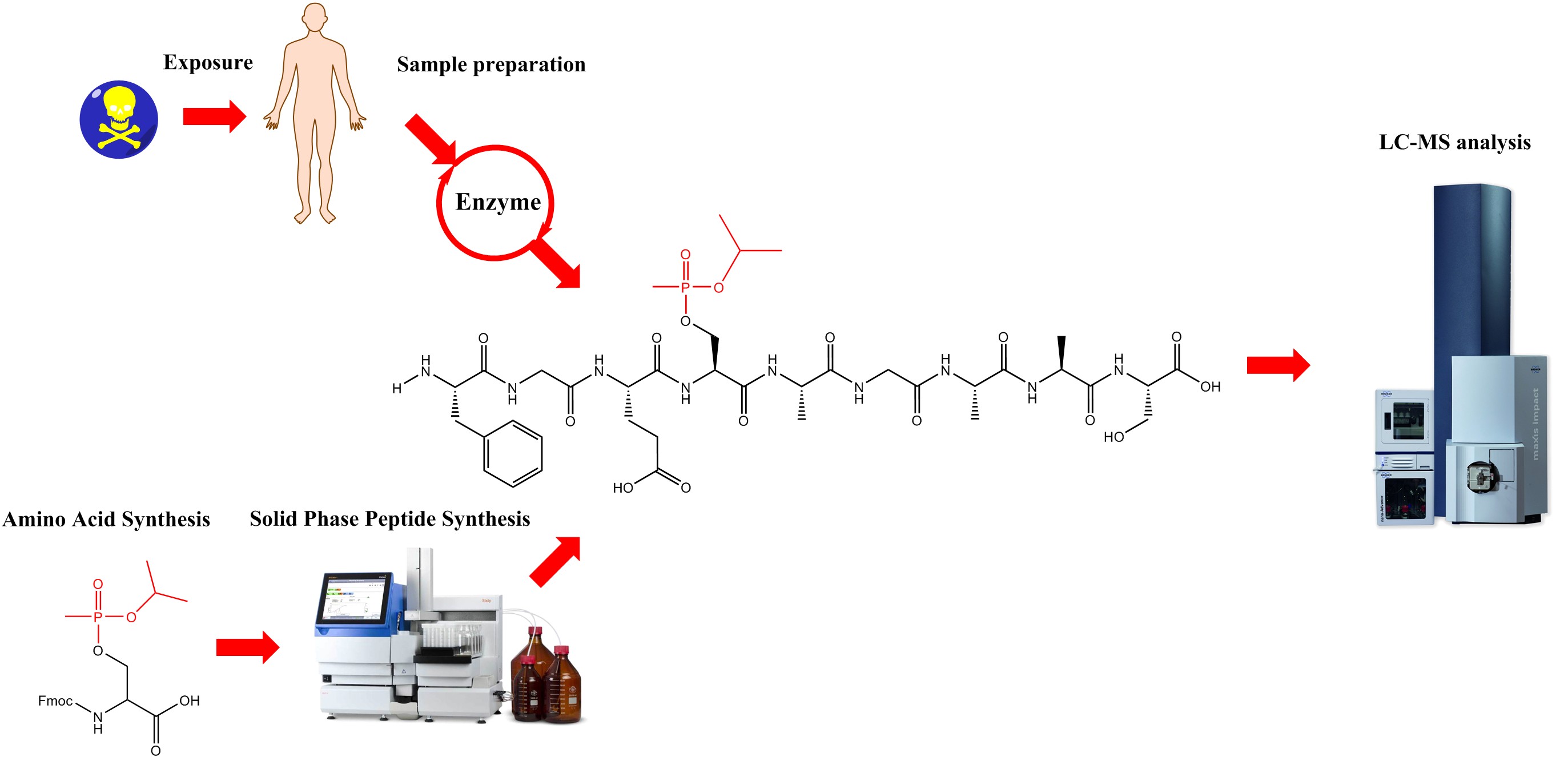Synthetic Approach to Protein Organophosphorous Chemical Warfare Agent Bioadducts
Organophosphorous nerve agents are very potent acetyl- and butyrylcholinesterase inhibitors and their development, production, stockpiling and use is prohibited by the Chemical Weapons Convention. Developed in the 1930s, nerve agent chemical weapons still pose a threat nowadays as recent events in Syria and Malaysia have shown. They react with biomolecules in the body and these bioadducts have an extended half-life compared to the unreacted, degraded and metabolized nerve agents in biological samples. This makes them very attractive as biomarkers, which can be detected using HPLC-MS/MS. Cholinesterase nerve agent adducts can age by losing the P-O-alkyl chain. The aged adduct is of special relevance since after a certain time it is the major marker found in biomedical samples.

In this work we successfully developed a method, based on a building block approach, to synthesize nonapeptide nerve agent adducts, which are relevant compounds for the analytical verification. Amino acids are phosphylated with nerve agent chloridates and further used in solid-phase peptide synthesis (SPPS). We also developed and investigated two pathways for the synthesis of the aged adduct. Different protecting group strategies were used and an optimized SPPS protocol was developed which takes into account the lability of phosphylated amino acids. In the search for a purificationless preparation of the peptides we identified several side products and solutions to circumvent them were found. Further we synthesized isotope labeled nerve-agent-peptide adducts for their increased value as standards in analysis.
The synthesized adducts can be used as reference standards in the search for evidence of exposure to nerve agents and are successfully in use in the development of biomedical analysis methods at Spiez Laboratory.